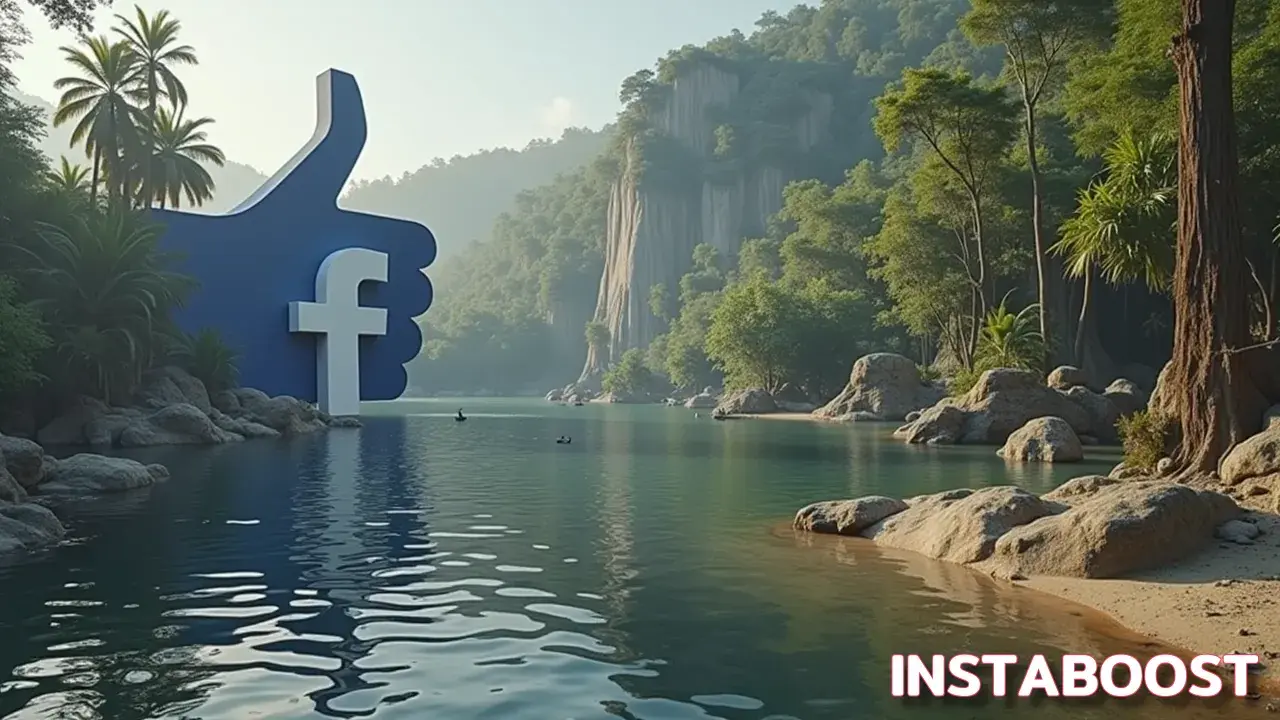Can You Find Who Looks at Your Facebook Profile?
Direct viewer lists are not available, but consistent engagement can indicate attention. Look for recurring comments, profile visits following posts, and slight increases in messages to gauge interest. Establish simple benchmarks to compare these signals over time and adjust content accordingly. A focused approach to tracking patterns helps refine posts and build reach with purpose.
What You Can Actually Learn About Profile Attention
If you want a neat list of who viewed your page, Facebook doesn’t show that, but you’re not flying blind. Attention leaves fingerprints you can measure, and those signals get stronger when they match intent. Treat “who looks at your Facebook profile” as a behavior question – who follows after a post, who sticks around to react or comment, who clicks through from Reels or Stories, and who shows up in your inbox after a spike.
Pair those clues with clean analytics and a simple benchmark by tracking follower adds, profile taps, and comment quality per post, and you can map real interest without guessing; when you need a tighter workflow, it helps to grow faster with smart Facebook tools that consolidate insights you’re already using.
Pair those clues with clean analytics and a simple benchmark by tracking follower adds, profile taps, and comment quality per post, and you can map real interest without guessing; when you need a tighter workflow, it helps to grow faster with smart Facebook tools that consolidate insights you’re already using.
This works best when you run a tight testing loop. Vary the hook, thumbnail, and posting time, then compare outcomes over two or three cycles. If you invest in targeted promotion, use qualified audiences matched to the post topic. Low-quality boosts can inflate numbers without giving you retention signals. Creator collabs and timely replies to real comments often draw repeat visits you’ll notice in steady thread activity and a small bump in messages. Privacy settings affect visibility, so align format and audience selection with your goal – public for reach, friends or custom lists for depth.
The practical win isn’t chasing a viewer list. It’s catching patterns – an industry group that engages by noon, a Reel that consistently drives profile taps, a carousel that gets saved more than shared – and doubling down. If you set safeguards, like excluding past engagers in paid tests and noting organic baselines before a promo, you’ll see what actually moved the needle. That’s how you read attention on Facebook and shape content that grows on purpose.

Signals That Make You Trust the Numbers
I’ve watched smart campaigns stall for a simple reason: plenty of energy, ideas, and spend, but no disciplined way to confirm who’s actually leaning in. If you’re trying to figure out who looks at your Facebook profile, credibility comes from a clean measurement stack and a short list of retention signals you check every week. Separate curiosity from commitment. Follows within 48 hours of a post, repeat commenters across two or more topics, and profile taps that lead to message threads are stronger tells than one-off likes. Tie those to sources – Reels, Stories, Search, or a creator collab – so you can see which entry points attract people who stick; even when evaluating third‑party boosts such as Facebook follower packages to buy, treat them as variables to control, not shortcuts.
If you add paid promotion, keep it reputable and focused on amplification, not vanity. Quality traffic with clear intent works when it’s matched to audience fit and timing, and it beats cheap clicks. Build a testing loop with safeguards. UTM links on featured posts, consistent posting windows, and a simple baseline – like comment quality and DM volume per 1,000 impressions – make spikes comparable. When you see a surge, confirm it with lag indicators like saves, shares, replies that include questions, and follow-through actions such as newsletter sign-ups or product page taps. This is where “who viewed my profile” turns practical. You’re not chasing names – you’re mapping behavior paths you can repeat. Pair content that earns real comments with targeted promotion and clean analytics, and you’ll spot the subset of viewers who matter – the ones who return, respond, and convert. That’s a steady way to read attention and use it to grow.
Build a Weekly Attention Map You Can Actually Use
Every strategy should survive a bad week. Set a baseline that won’t crumble when a post underperforms, and use it to get past “who looks at your Facebook profile” to the real question – who leans in often enough to matter. Build a simple attention map you update every week: new follows within 48 hours of a post, repeat commenters across two different themes, Story or Reels taps that lead to profile views, and message threads that start after a content spike. Those are retention signals, not vanity metrics. Pair organic content with light, targeted promotion when your comments feel real and your analytics are clean.
If the picture is muddy, fix the inputs first so you’re not paying to confuse it. A small budget works when you limit it to posts that already earned saves or multi-comment threads, then watch whether the same names show up again; the same goes for giveaways, where surface-level spikes from tactics like buy Facebook likes for giveaways can mask whether your core audience is actually returning. If you collaborate with a creator, choose one whose audience overlaps your topic and add safeguards – UTM links, a clear call to DM, and a 7-day check on follow quality. The point isn’t forensic certainty. It’s a testing loop that shows patterns over time.
If a Reel drives profile taps but no inbox action, your hook works and your offer doesn’t. Adjust the offer. If comments grow but follows don’t, tighten targeting or ask for the follow in-thread. Use reputable analytics add-ons to enrich what Facebook already shows, and drop any tool that muddies attribution. When a bad week hits, hold your cadence, compare against your baseline, and keep publishing into the same signals. Momentum returns faster when measurement stays steady and your next post is built from what the last one proved.
When Curiosity Becomes a Trap
I used to be optimistic. Then I opened analytics. Chasing “who looks at your Facebook profile” can pull you into vanity metrics that feel precise but don’t move outcomes.
The better pushback is simple: intent beats identity. You don’t need a name-by-name roster to act smart. You need a repeatable way to see who’s moving from a quick glance to real participation. If your measurement isn’t tying profile taps to message threads or follows within 48 hours of a post, you’re grading vibes. A qualified toolset – Facebook’s native Insights plus a reputable reporting layer – works when you define retention signals upfront and audit attribution weekly.
Bolting on three trackers and hoping usually muddies the view. Organic reach can mislead too. A viral Reel may flood you with likes from low-intent geos, so your attention map should filter for repeat commenters across two different themes and creators whose audiences overlap with yours, and don’t confuse artifact metrics such as buy Facebook story views with genuine lift. If you promote, do it when comments are real and your analytics are clean. Cap spend until you see lift in the signals that matter. Creator collabs follow the same logic.
They work when the partner’s audience has problem-solution alignment and you’re measuring follow-through, not just impressions. You can’t download a list of profile viewers, but you can build a testing loop that surfaces who leans in often enough to matter. That’s the non-obvious win. Use “who looked” as a prompt to design content that makes people reveal themselves, ask for a micro action, gate deeper value behind a message, and watch the pattern. The names will emerge through behavior – and you’ll have the safeguards to scale.
From Curiosity to Compounding Results
You don’t need certainty. You need motion. Treat “who looks at your Facebook profile” as a springboard, not the finish line, and let your weekly attention map carry the load. Fold retention signals into a rhythm you can trust: a quick review after each content spike, a monthly pass to prune deadweight audiences, and a quarterly test of one accelerant at a time. Light, targeted promotion works when your comments are real, your audience fit is clear, and your analytics are clean enough to separate curiosity from intent; if you’re experimenting with social proof mechanics, existing behaviors like buy Facebook shares sit alongside boosts only when they reinforce posts that already earn repeat commenters and message threads.
When early momentum shows up twice, scale gradually. Pair that with creator collabs matched to your audience’s language, not just their follower count, and add simple safeguards like frequency caps, exclusions, and time windows so results stay attributable. The non-obvious move is to answer “who’s looking” by engineering chances for people to self-identify with tap-to-answer polls, DMs triggered by a keyword, or Stories that invite a quick vote. Each micro-action is a permissioned breadcrumb that compounds over weeks. Use them to build segments you will actually revisit: warm lurkers, active contributors, and recent joiners.
Then rotate formats – Reels for reach, Stories for depth, Lives for trust – so attention has somewhere to go. If you want a push, trials from reputable analytics tools can help when they’re matched to a clear testing loop and a plan to act on findings within seven days. That’s how curiosity becomes a system and how you grow, even without a viewer list.















